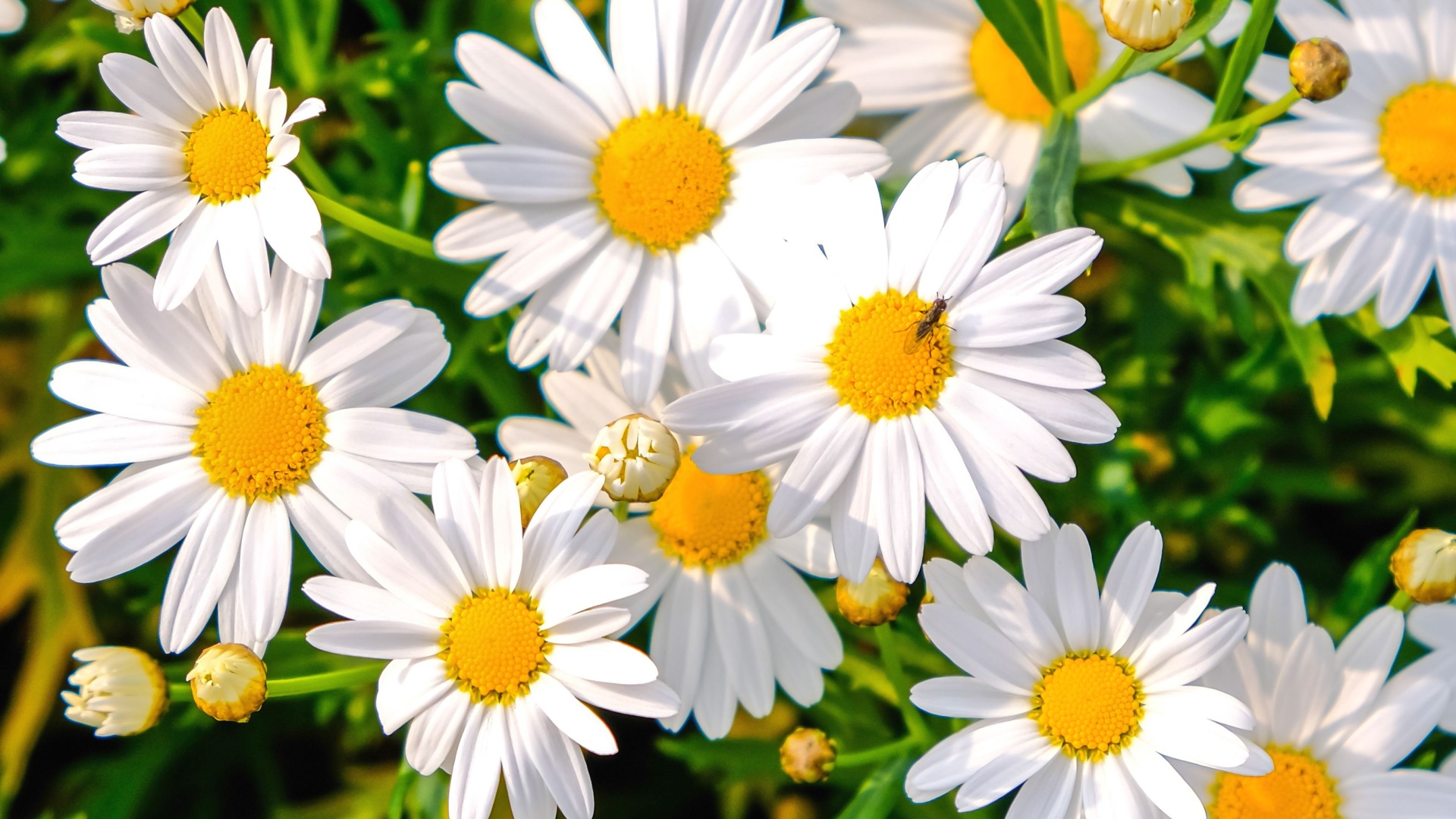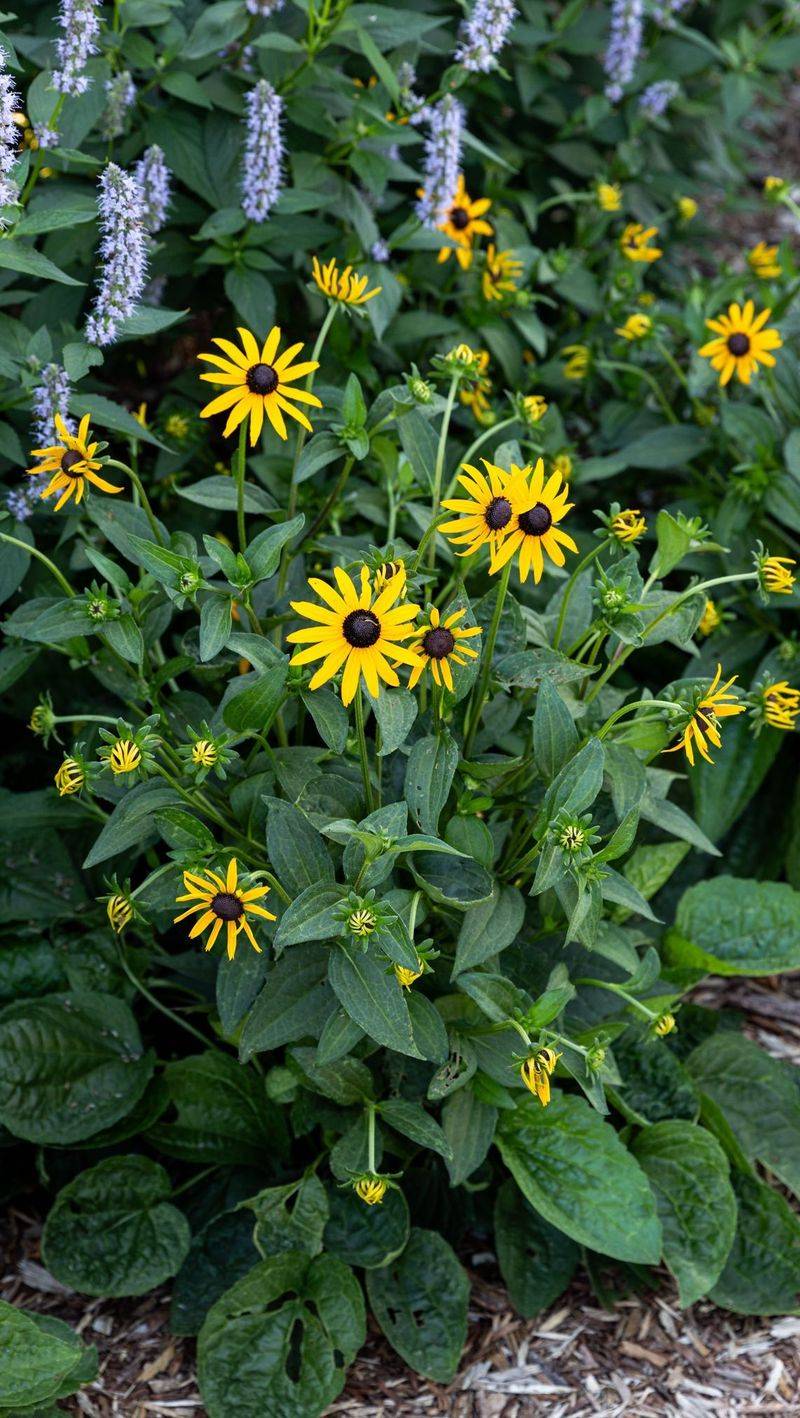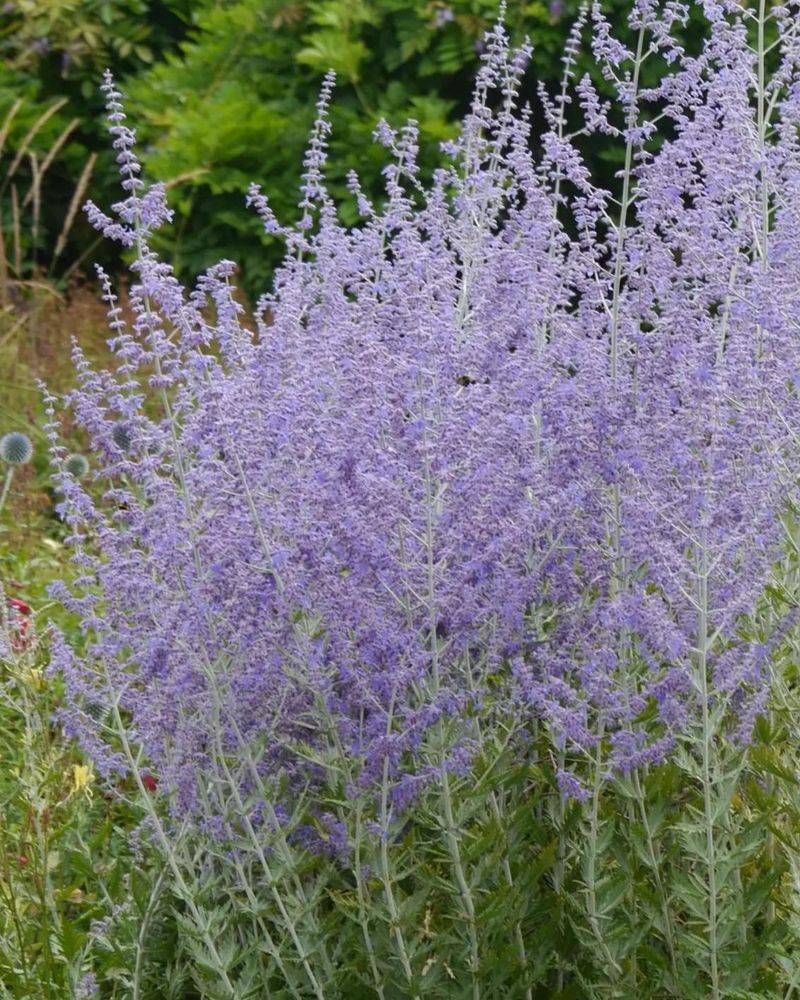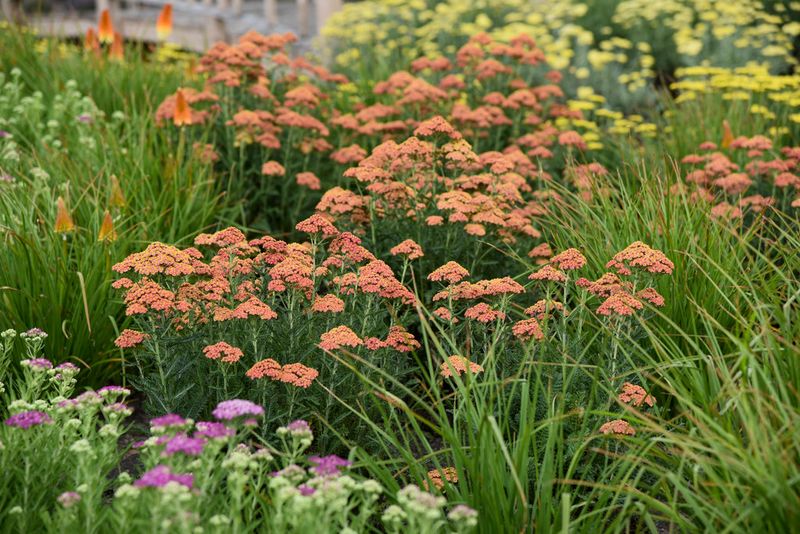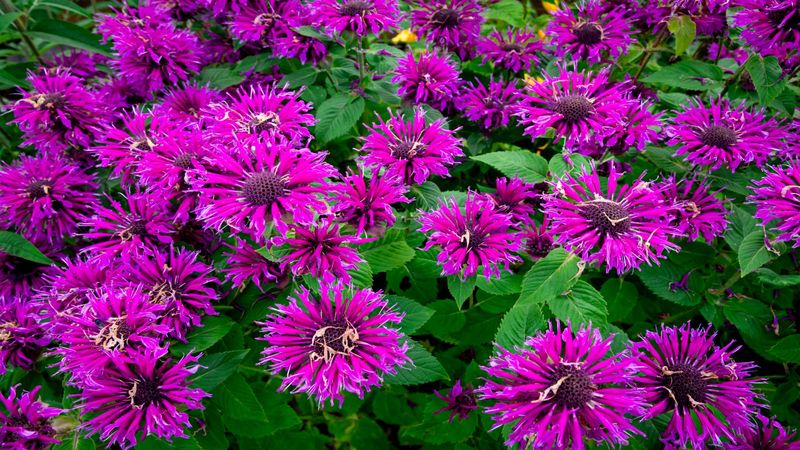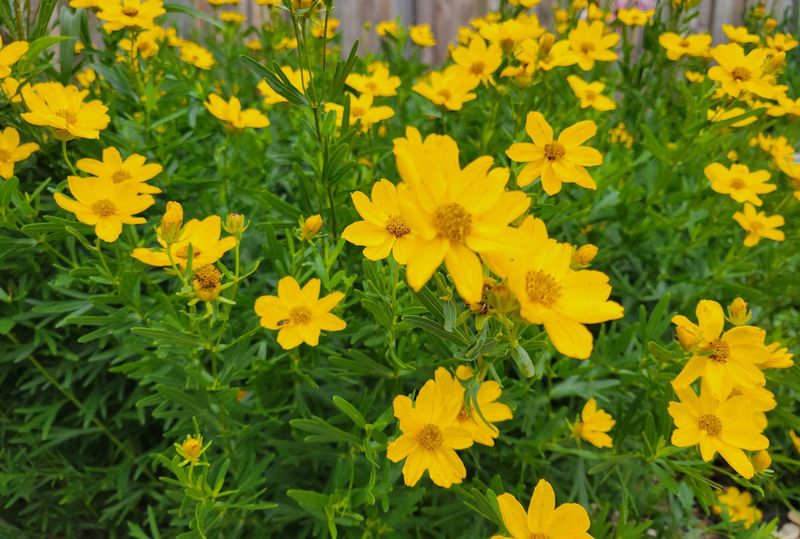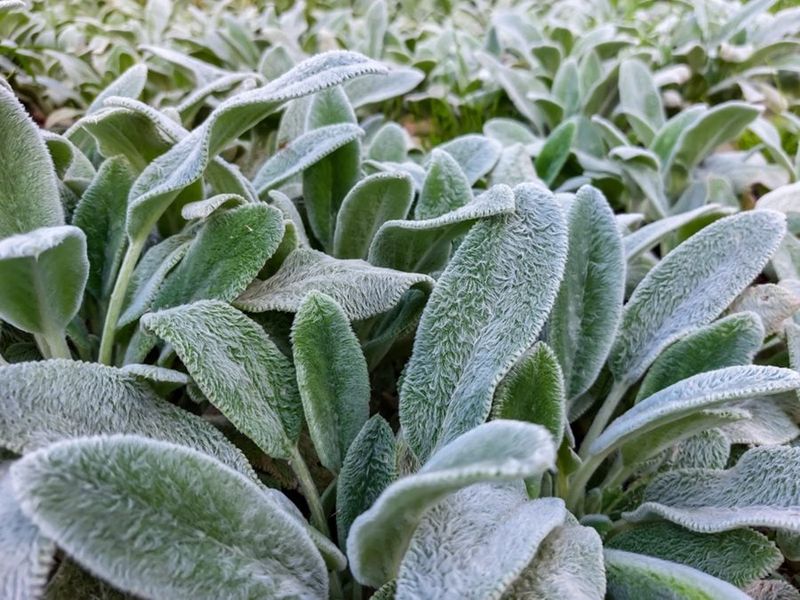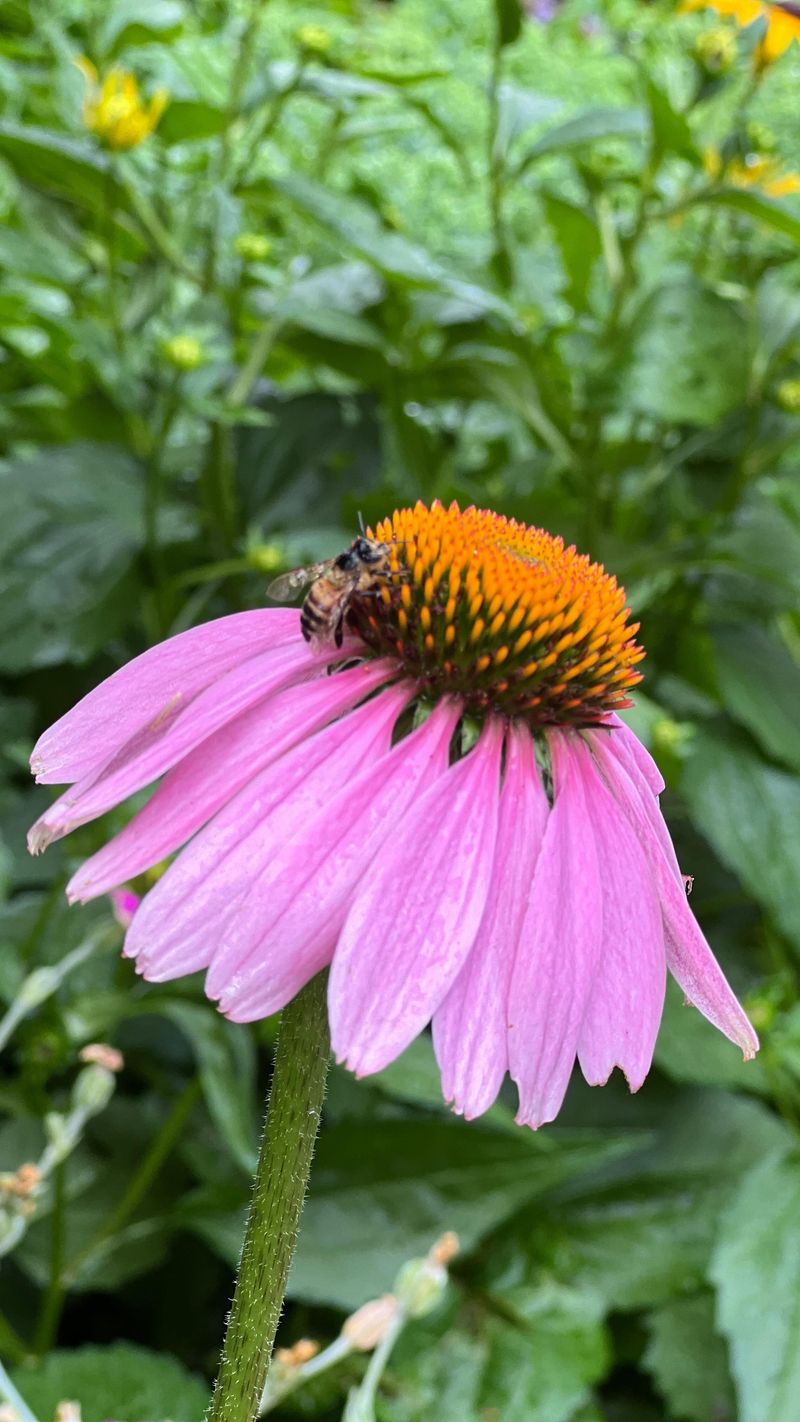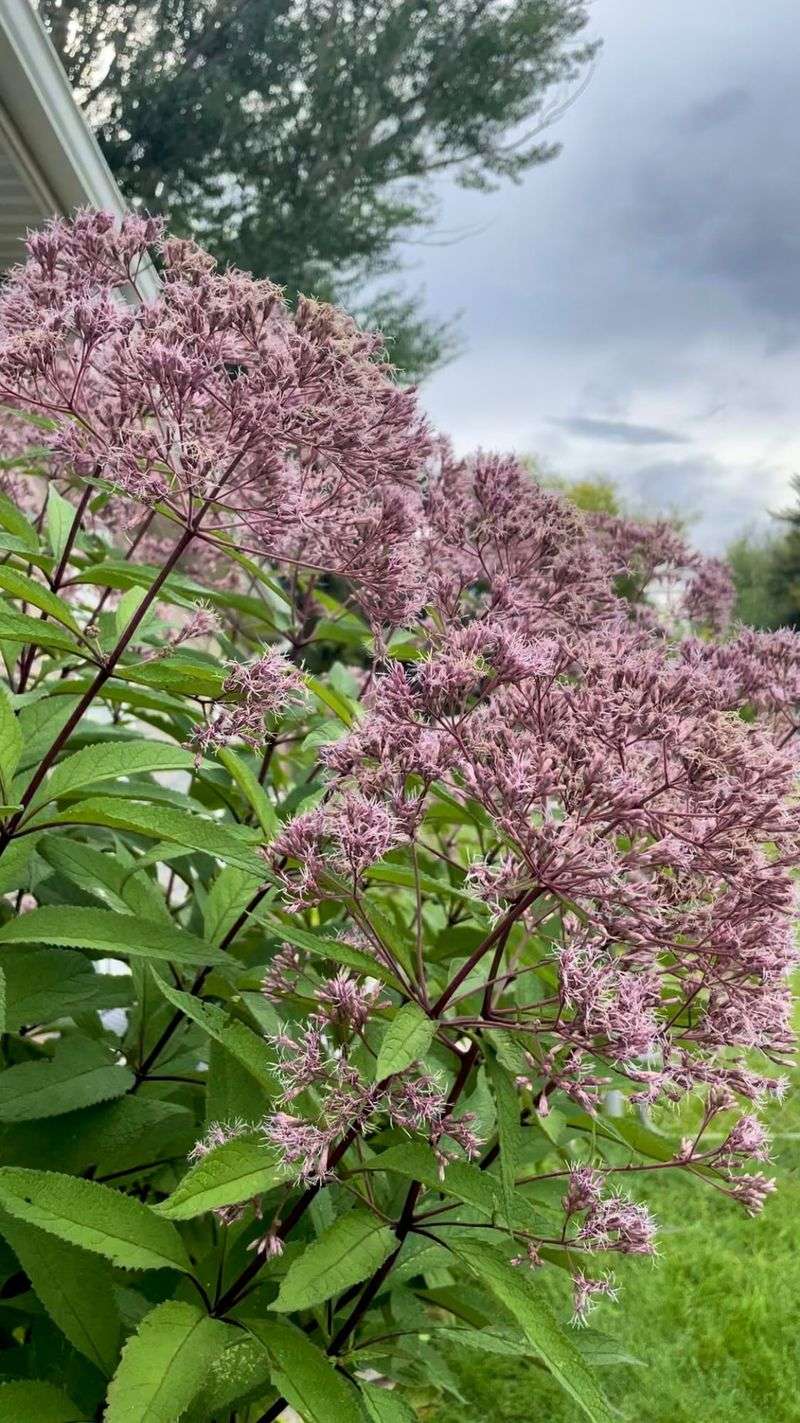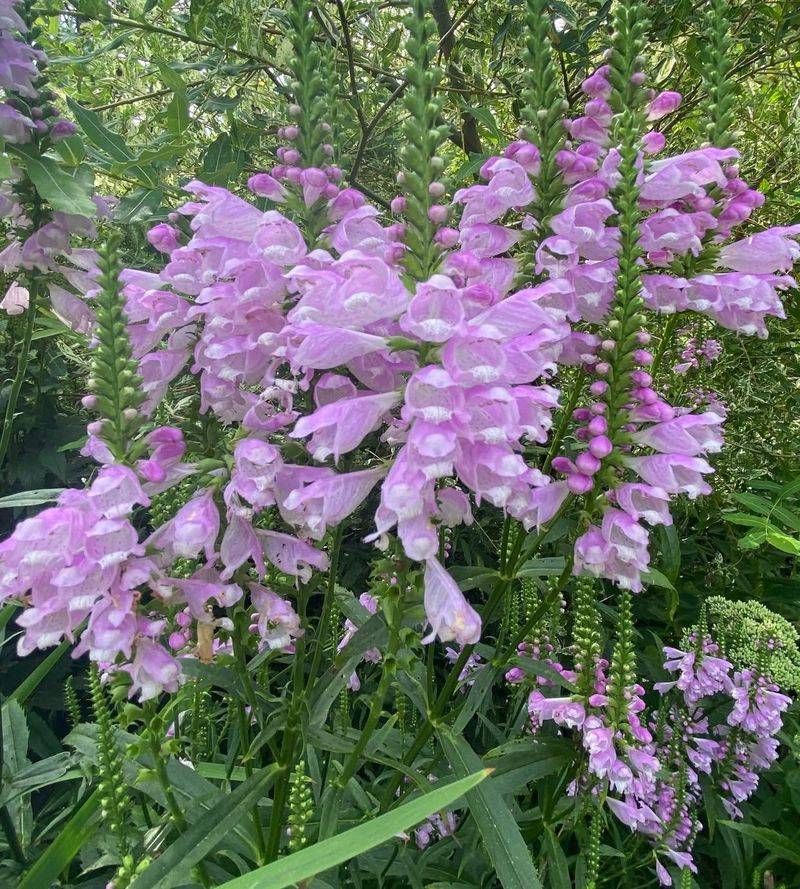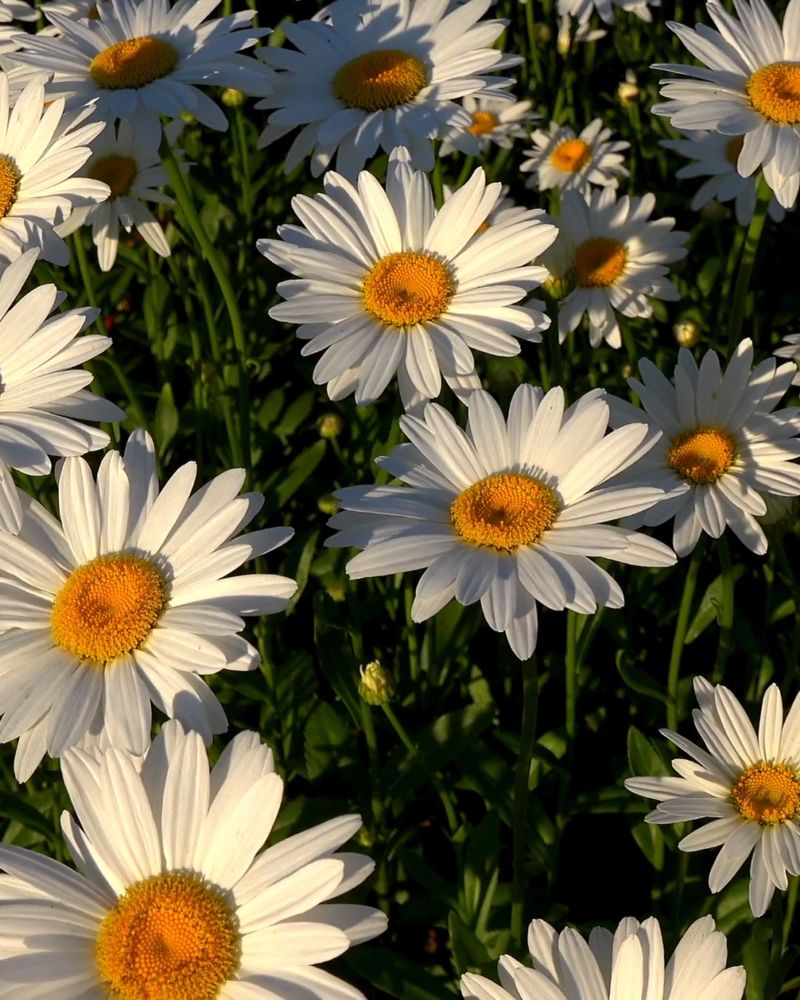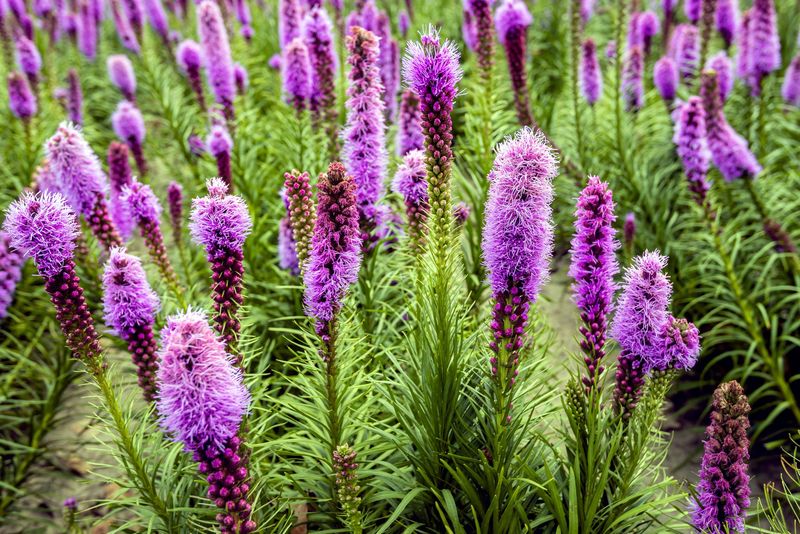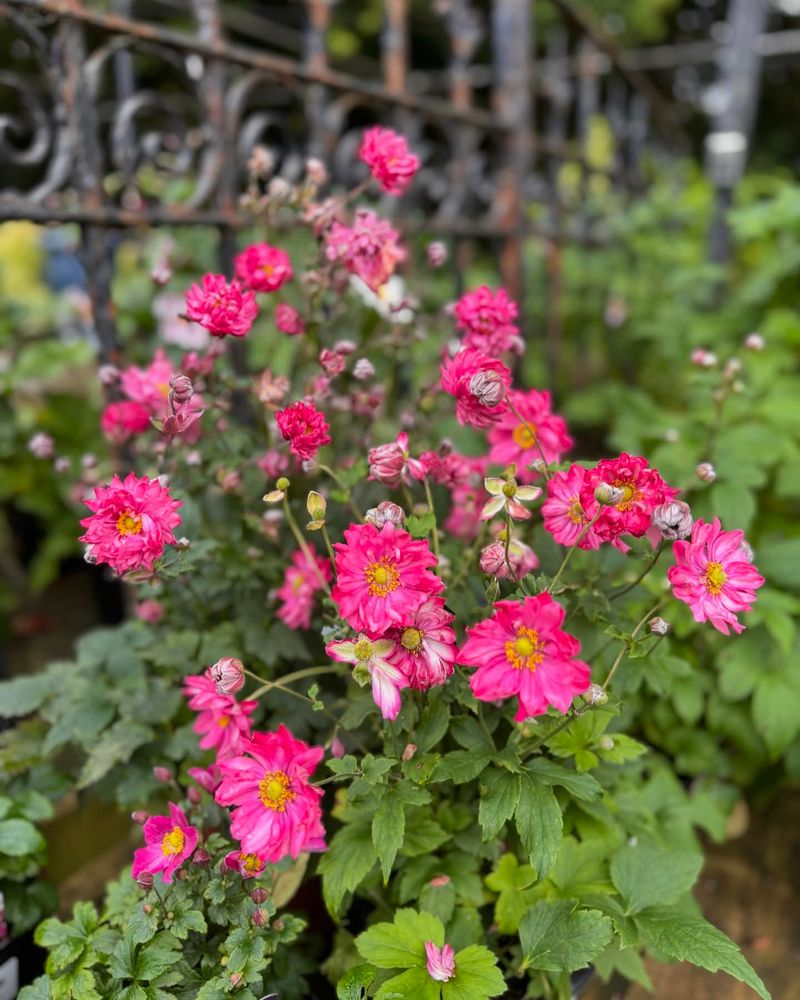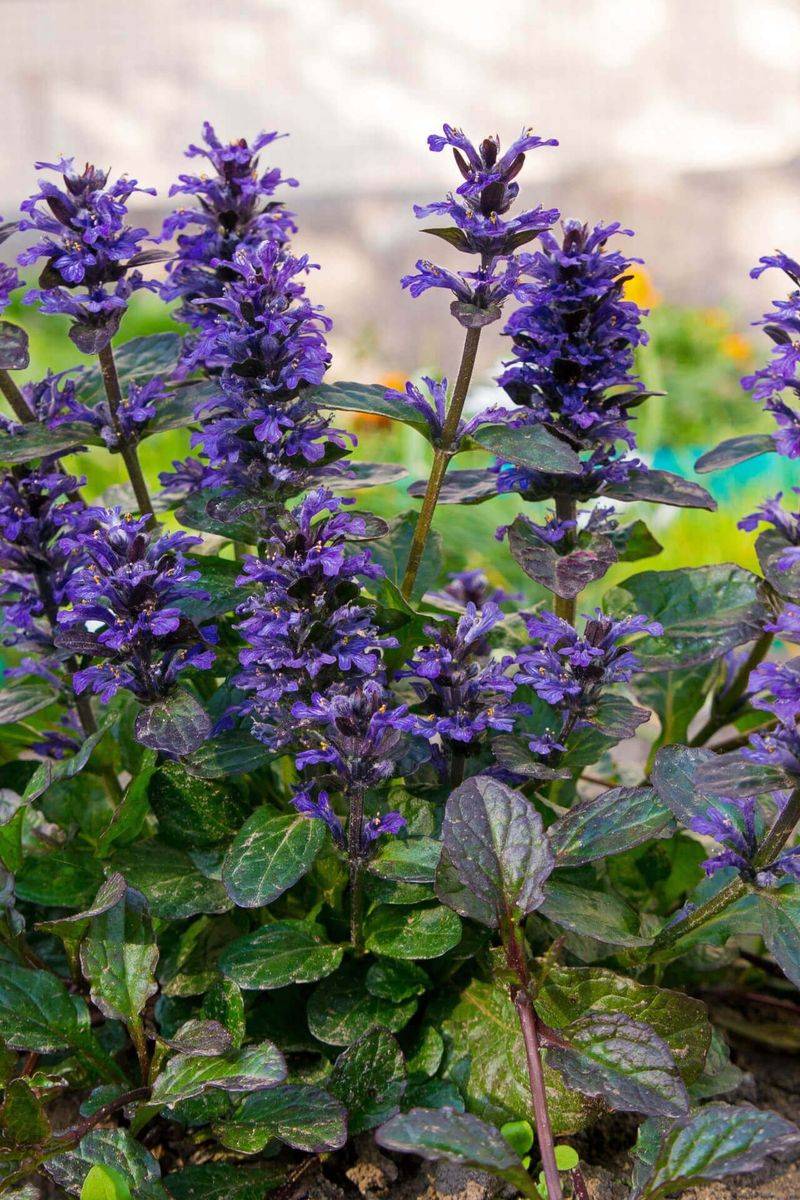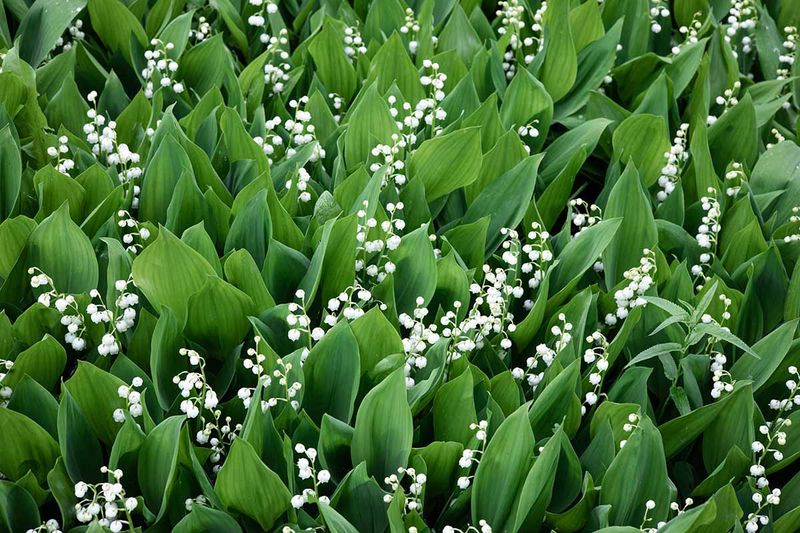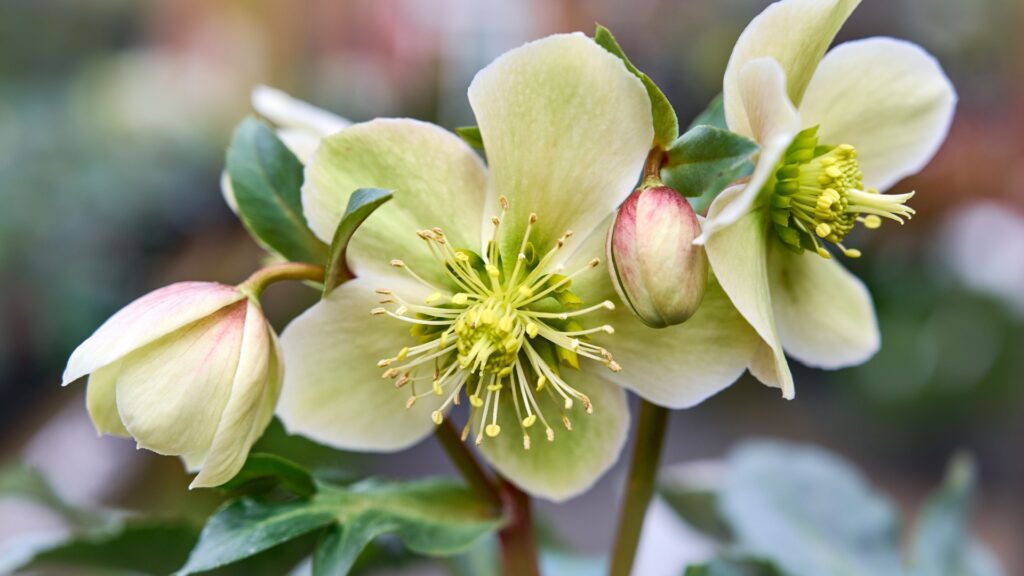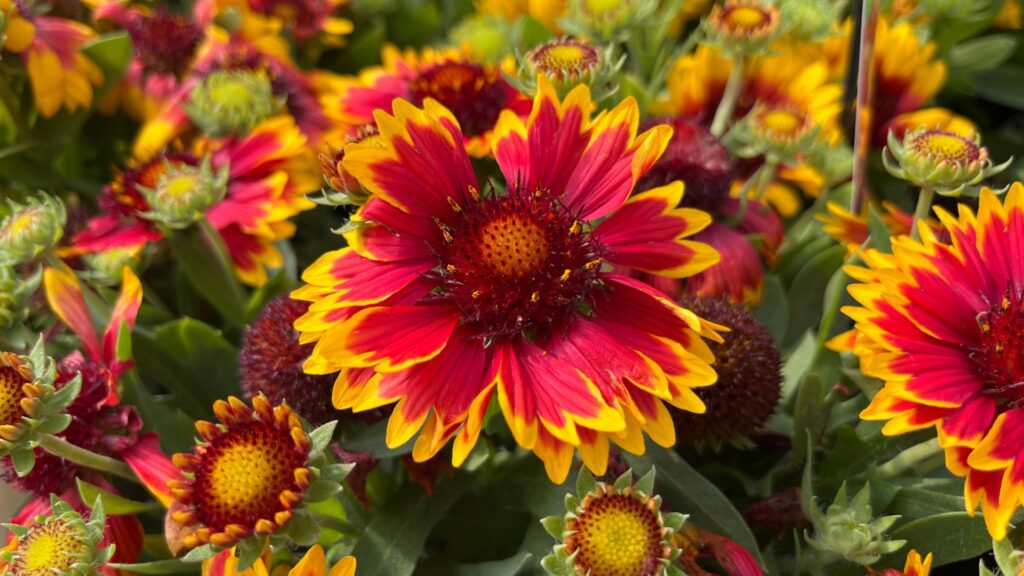Gardening always keeps you on your toes—especially with fast-growing perennials. I’ve planted plenty in search of that sweet spot between instant color and easy care. Some hit the ground running and stole the show. Others? Total garden divas.
A few became go-to favorites—steady bloomers that play nice with neighbors. But others wore out their welcome faster than you can say “invasive roots.”
Here’s the honest scoop: the keepers and the ones I won’t touch again. These are the fast-growers I’ve planted, praised, and in some cases, permanently pruned from the plan.
1. Black-Eyed Susan
Golden petals surrounding dark centers make Black-Eyed Susans instant garden favorites. These native wildflowers spread rapidly through both seeds and underground rhizomes, creating impressive colonies within just two seasons.
My initial planting of three small pots expanded to cover an entire corner of my garden by the following summer. Their drought tolerance and ability to bloom from June until frost earned them permanent status in my landscape.
While some gardeners find them too aggressive, strategic deadheading controls their spread while providing weeks of cheerful blooms that attract beneficial pollinators.
2. Russian Sage
Silvery-blue spires of Russian Sage transformed my garden’s hot, dry corner into a dreamy haze of color. Within one season, the tiny starter plants grew into substantial 3-foot shrubs that sway elegantly in summer breezes.
Unlike some aggressive spreaders, Russian Sage stays relatively contained while still growing quickly. The aromatic foliage naturally repels deer and rabbits, eliminating the need for protective measures.
I’ll absolutely plant this perennial again for its drought tolerance, long bloom period, and the way its soft color complements virtually everything else in my garden.
3. Yarrow
Yarrow earned its place in my garden through sheer resilience. From small starts to substantial clumps in mere months, this perennial thrives in conditions that would kill fussier plants. Its flat-topped flower clusters in yellow, white, and peachy-pink shades attract butterflies throughout summer.
After three years, I discovered yarrow’s downside – it spreads aggressively through underground runners. What started as a tidy clump soon invaded neighboring plants’ territory.
While I appreciate yarrow’s drought tolerance and deer resistance, I now plant it only in contained areas or meadow gardens where its spreading habit becomes an asset rather than a nuisance.
4. Bee Balm (Monarda)
Hummingbirds flock to my garden thanks to Bee Balm’s shaggy, crown-like flowers in vibrant reds and purples. This native perennial exploded from a single plant to a 3-foot-wide patch in just two growing seasons.
Unfortunately, my love affair with Bee Balm soured when powdery mildew consistently turned its leaves an unattractive white by midsummer. Even with improved air circulation and resistant varieties, the problem persisted year after year.
Despite its rapid growth and wildlife benefits, I’ve replaced most of my Bee Balm with similar but more disease-resistant perennials that don’t require constant monitoring and treatment.
5. Catmint (Nepeta)
Clouds of lavender-blue flowers appear over silvery foliage just weeks after Catmint emerges in spring. My ‘Walker’s Low’ variety rapidly filled a 3-foot space, creating a softening effect along my garden path that I absolutely adore.
Unlike many fast-growers, Catmint maintains a tidy habit without becoming invasive. A quick shearing after its first bloom rewards me with a second flush of flowers that continues until frost.
The fragrant foliage naturally deters pests while attracting pollinators. I’ve since added Catmint throughout my garden as a reliable, low-maintenance perennial that looks good from spring through fall.
6. Coreopsis (Tickseed)
Sunshine yellow blooms appeared by the hundreds on my Coreopsis plants within months of planting. These cheerful daisies seem to grow in fast-forward, reaching mature size their first season and flowering non-stop from early summer through fall.
My initial delight faded somewhat when I discovered their short-lived nature. Despite being perennials, most of my plants declined significantly after just 2-3 years, requiring replacement.
I still include Coreopsis in my garden for its fast growth and pollinator benefits, but I’ve adjusted my expectations. Now I treat them as short-term perennials and have seedlings ready to replace older plants as they decline.
7. Lamb’s Ear
Velvety silver foliage makes Lamb’s Ear instantly recognizable and irresistibly touchable. Starting with just three small plants, I watched in amazement as they tripled in size within months, creating a soft, tactile groundcover beneath taller perennials.
The rapid growth quickly became problematic. Lamb’s Ear sent runners in all directions, invading neighboring plants’ space and requiring regular boundary enforcement. After heavy rains, the fuzzy leaves often developed unsightly rot spots.
While children love its soft texture, I’ve relegated Lamb’s Ear to contained areas only. Its aggressive growth habit and susceptibility to rot make it more trouble than it’s worth in prime garden spaces.
8. Purple Coneflower (Echinacea)
Native prairie roots give Purple Coneflower its remarkable resilience and growth rate. My plants established quickly, producing their distinctive daisy-like flowers with raised centers by their first summer. Goldfinches visited daily to feast on the seeds.
Unlike some fast-growing perennials that become problematic, Echinacea maintains a well-behaved clump that gradually expands without becoming invasive. Self-seeding provides bonus plants that can be relocated or shared with friends.
I continuously add more Echinacea varieties to my garden for their drought tolerance, long bloom time, and wildlife value. They’re the perfect combination of fast growth and good behavior.
9. Joe-Pye Weed (Eutrochium)
Towering stems topped with mauve flower clusters make Joe-Pye Weed a back-of-border standout. My starter plants shot up to their impressive 6-foot height in just one season, creating dramatic vertical interest where once was emptiness.
Butterflies swarm the massive blooms from July through September. The plant’s rapid growth doesn’t translate to invasiveness – it forms a well-behaved clump that gradually expands without taking over.
Though some gardeners find it too large, I cherish Joe-Pye Weed’s architectural presence and wildlife value. Its fast growth quickly established the “bones” of my perennial garden while providing food for countless pollinators.
10. Obedient Plant
Pink snapdragon-like flowers on tall stems earned Obedient Plant its initial spot in my garden. Its name comes from how the individual flowers stay in position when moved – the only obedient thing about this aggressive spreader.
Within two seasons, what started as a small clump had sent underground runners several feet in all directions, popping up throughout my carefully planned perennial bed. Removing unwanted plants became a constant battle I ultimately lost.
Despite its pretty flowers and rapid growth, I’ve banished Obedient Plant from my main gardens. It now lives in a contained area where its aggressive nature can’t cause problems.
11. Shasta Daisy
Classic white daisies with sunny yellow centers transformed my garden within weeks of planting. Shasta Daisies quickly formed substantial clumps that produced armloads of cut flowers throughout summer.
Their rapid growth didn’t come with invasive tendencies. Instead, they formed well-mannered clumps that gradually increased in size while staying exactly where I planted them.
After three seasons, I noticed the centers of older clumps beginning to die out, signaling time for division. This maintenance requirement is a small price to pay for perennials that establish so quickly and provide months of cheerful blooms perfect for both garden display and vase arrangements.
12. Liatris (Blazing Star)
Vertical purple spikes of Liatris create a dramatic effect in my summer garden, growing from corms to flowering plants in a single season. The unusual blooming pattern – from top to bottom rather than bottom to top – adds unique visual interest among more traditional flowers.
Butterflies and bees flock to the nectar-rich blooms. Unlike many fast-growing perennials, Liatris maintains a well-behaved habit, gradually forming larger clumps without becoming invasive or requiring constant maintenance.
I continue adding more Liatris throughout my garden for their drought tolerance, pollinator benefits, and the vertical accent they provide among mounding perennials. Their rapid establishment provides quick garden gratification.
13. Japanese Anemone
Elegant pink or white flowers dancing on tall stems make Japanese Anemones fall garden standouts. What started as a small plant quickly expanded its territory through underground runners, filling a previously empty corner with late-season color.
Their rapid growth became concerning by year three. New plants emerged several feet from the original, popping up in pathways and neighboring beds. Removing unwanted shoots became a regular maintenance task.
While I appreciate their September blooms when other perennials are fading, I now recommend Japanese Anemones only for large gardens where their spreading habit becomes an asset rather than a headache. In smaller spaces, their vigor quickly becomes problematic.
14. Sedum ‘Autumn Joy’
Succulent rosettes of blue-green foliage emerge early in spring, growing rapidly into substantial plants topped with broccoli-like flower buds by midsummer. These transform into broad pink flower heads that deepen to rusty red as fall approaches.
Unlike many fast-growing perennials, ‘Autumn Joy’ Sedum stays exactly where planted. Its clumps gradually expand outward but never send runners or become invasive.
I’ve added more of these reliable perennials throughout my garden for their drought tolerance, four-season interest, and structural value. Even in winter, the dried flower heads add dimension to the garden while providing food for birds.
15. Ajuga (Bugleweed)
Carpets of glossy, often purple-tinged foliage make Ajuga an attractive groundcover option. Small blue flower spikes emerge in spring, adding seasonal color to this fast-spreading perennial that quickly filled bare spots under trees where grass wouldn’t grow.
My initial enthusiasm waned when Ajuga began invading my lawn and nearby garden beds. Its creeping stems root wherever they touch soil, creating new plants that require constant removal to maintain boundaries.
While effective at suppressing weeds and providing evergreen color, I no longer plant Ajuga in open garden situations. I reserve it for contained areas or spots bordered by hardscape elements that can halt its relentless spread.
16. Lily Of The Valley
Sweetly scented white bells dangling above glossy green leaves make Lily of the Valley an irresistible spring bloomer. My initial small planting spread rapidly through underground rhizomes, creating a lush groundcover in a shady corner that once grew nothing but weeds.
The rapid expansion quickly became problematic. Within three years, plants appeared several feet from the original bed, invading nearby perennials and proving nearly impossible to eradicate completely.
Despite its fragrance and ability to grow in dense shade, I cannot recommend Lily of the Valley for most gardens. Its aggressive nature and resistance to removal make it a perennial I deeply regret introducing to my landscape.
17. Hellebore (Lenten Rose)
Hellebores might not seem like fast-growers at first glance, but my experience says otherwise—especially when planted in the right shady corner. Within just a couple of years, my original trio of plants doubled in size, producing leathery, evergreen foliage and dozens of early-spring blooms in dusky pinks, purples, and creams.
Their self-seeding nature took me by surprise. By the third year, I spotted seedlings scattered a few feet from the mother plants. While not invasive, they quietly expanded their presence without much fuss.
I now welcome these slow-spreading seedlings in my shade garden, where few other perennials thrive so early in the season. Hellebores have become a staple thanks to their early color, deer resistance, and low-maintenance growth habit.
18. Blanket Flower (Gaillardia)
I planted Blanket Flower for a burst of color, and it delivered with gusto—growing from small plugs to 18-inch mounds covered in fiery red-and-yellow blooms within a single season. Blooming non-stop from early summer into fall, it quickly became one of the most eye-catching plants in my sunny border.
However, its vigor comes with a short lifespan. Most of my original plants fizzled out after just a couple of seasons, but not before scattering seeds that sprouted the following spring. It’s technically a short-lived perennial, but it behaves more like a self-renewing annual.
I’ve made peace with its brief stay by letting it reseed freely in open areas. For gardeners needing quick color and pollinator appeal, Blanket Flower is an easy, low-fuss option that brings long-lasting joy—even if the individual plants don’t.

